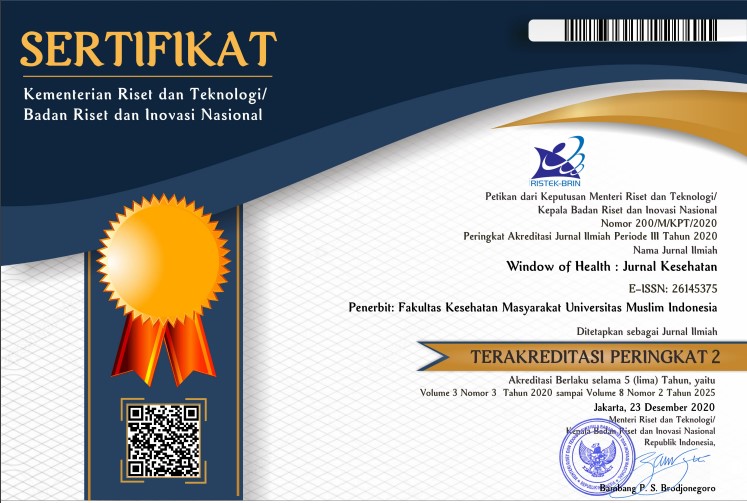Papaya Fruit Supply Chain System in Surabaya City: Towards a Better Food and Nutrition Urban Governance
Abstract
Papaya (Carica papaya Linn) is a tropical fruit with high economic and nutritional value. Indonesia was the fourth biggest papaya producer in the Asian continent from 2008 to 2018, and East Java was the primary contributor. Papaya has complex chemical components such as protein, carbohydrates, fat, fiber, minerals, and vitamins. However, its supply chain system faces challenges such as postharvest issues, processing and transportation, and low consumption. This study aimed to determine the papaya fruit supply chain system in Surabaya City to reform the existing food and nutrition action plan, which has not yet been fully implemented. With a toolkit from FAO called RUFSAT (Rapid Urban Food System Assessment Tool), the food system was developed with a primary concern on papaya commodities. Results indicated that the papaya supply chain in Surabaya is comprised of three channels: farmer to collector, wholesaler/distributor, retailer, and consumer. Acquisition and distribution of papaya still suffered from losses, food safety, transportation handling, packaging issues, and quality assurance practices. In terms of consumption, most households ingested papaya within 1-3 times per week, which is considered inadequate. Effective collaboration among city government agencies is pivotal for addressing supply chain complexities. In addition, integrating papaya with other fruits into urban farming initiatives can help to improve the nutritional status of Surabaya citizens.
References
Bari L, Hassan P, Absar N, Haque ME, M.I.I.E. Khuda, Pervin M, et al. Nutritional analysis of two local varieties of papaya (Carica papaya L.) at different maturation stages. Pakistan Journal of Biological Sciences [Internet]. 2005 Dec 15;9(1):137 40. Available from: https://doi.org/10.3923/pjbs.2006.137.140
Pinnamaneni R. Nutritional and medicinal value of papaya (Carica Papaya Linn.).World Journal of Pharmacy and Pharmaceutical Sciences [Internet]. 2017 Aug 1;2559 78. Available from: https://doi.org/10.20959/wjpps20178-9947
FoodData Central. USDA. Papaya Raw. [Internet]. 2019. Available from https://fdc.nal.usda.gov/fdc app.html#/food details/169926/nutrients
Mason J, Mannar V, Mock NB. Controlling micronutrient deficiencies in Asia. Asian Development Review [Internet]. 1999 Jan 1;17(01n02):66 95. Available from: https://www.worldscientific.com/doi/10.1142/S0116110599000032
Devaki CS, Samreen F, Prakash J. A review on composition, processed products and medicinal uses of papaya (Carica papaya L.). International Journal of Food, Nutrition, and Dietetics [Internet]. 2015 Jan 1;3(3):99 117. Available from: https://doi.org/10.21088/ijfnd.2322.0775.3315.3
FAO. Major tropical fruits - Statistical compendium 2018. Rome.
BPS Provinsi Jawa Timur. Produksi tanaman buah dan sayuran tahunan (ton) 2014- 2016 [Internet]. Available from: https://jatim.bps.go.id/indicator/156/234/1/produksi-tanaman-buah-dan-sayuran-tahunan.html
Pratiwi, H.E. Aplikasi Kalium Permanganat sebagai oksidan Etilen dalam peyimpangan buah pepaya IPB Callina. Fakultas Pertanian, Institut Pertanian Bogor. 2014.
Negi S, Anand N. Issues and Challenges in the Supply Chain of Fruits & Vegetables Sector in India: A Review. International Journal of Managing Value and Supply Chains [Internet]. 2015 Jun 30;6(2):47–62. Available from: https://doi.org/10.5121/ijmvsc.2015.6205
Halliday, J., Platenkamp, L., Nicolarea, Y. (2019). A menu of actions to shape urban food environments for improved nutrition, GAIN, MUFPP and RUAF
Ministry of Health. Basic Health Research [RISKESDAS] 2018. Kementerian Kesehatan Republik Indonesia; 2018:1–100.
Audit Board of Indonesia. Regulation of the President of the Republic of Indonesia Number 83 of 2017. Strategic Food and Nutrition Policy. Available online at: https://peraturan.bpk.go.id/Details/73141/perpres-no-83-tahun-2017%20(accessed%20June%2006,%202021)
FAO. Urban Food Systems Analysis. Food and Agriculture Organization of the United Nations [Internet]. 2018. Available from: https://www.fao.org/urban-food-agenda/kenya/urban-food-systems-analysis/en/
Calista, TS, Suryanita F, Lonata D, et al. Simulasi rantai pasok buah pepaya di jawa timur [Internet]. 2013. Available from: https://prezi.com/gdlaxewuxbyv/simulasi-rantai-pasok-buah-pepaya-di-jawa-timur/
Prihatiningtyas R, S AS, Wijaya NH. Analisis Peningkatan Kualitas pada Rantai Pasok Buah Pepaya Calina. Jurnal Manajemen Dan Organisasi [Internet]. 2016 Jul 18;6(3):206. Available from: https://doi.org/10.29244/jmo.v6i3.12609
De Oliveira JG, Vitória ÂP. Papaya: Nutritional and pharmacological characterization, and quality loss due to physiological disorders. An overview. Food Research International [Internet]. 2011 Jun 1;44(5):1306 13. Available from: https://doi.org/10.1016/j.foodres.2010.12.035
FAO. Fertilizer use by crop in Indonesia [Internet]. Rome; 2005 [cited 2018 Jun 8]. Available from: http://inswa.or.id/wp-content/uploads/2012/07/Fertilizer-Use-by-Crop-in-Indonesia.pdf
HargaBulanIni.com. Harga pepaya per kg terbaru [Internet]. Harga Terbaru Bulan Ini. 2018. Available from: https://www.hargabulanini.com/harga-pepaya-per-kg-terbaru/
Purwadaria, H.K. Issues and solutions of fresh export in Indonesia. Department of Agriculture Engineering. Bogor Agriculture University. Indonesia. 2016.
Kitinoja, L. & Kader, A.A. Small-scale post-harvest handling practices: a manual for horticultural crops, Fourth Edition, United States, Postharvest Technology Research and Information Center, University of California, Davis. 2003.
GLOBALG.A.P. history. Retrieved June 6, 2018, from https://www.globalgap.org/about/history/
Ministry of Health. Minister of Health Regulation of the Republic of Indonesia No. 41 of 2014 Regarding Balanced Nutrition Guidelines. Jakarta. 2014.
Copyright (c) 2024 Kiki Ekiawan Lamatungga, Hasriwiani Habo Abbas, Muhammad Nasir Muhammad Nasir, Arsyidik Arsyidik

This work is licensed under a Creative Commons Attribution-NonCommercial-ShareAlike 4.0 International License.








